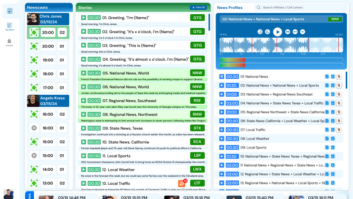Many of us remote into our computer systems, whether we are an air talent working from home who needs to jump onto an automation system, a PD helping a jock or an engineer accessing a remote transmitter system.
Your company may require you to use a VPN (Virtual Private Network) connection used for any VNC (Virtualized Network Connection) through its IT department. But sometimes it becomes necessary to use a VNC through third-party applications and services.
These can range from paid services like TeamViewer or AnyDesk to the path through the Google Chrome browser. But since any “open door” can let in unwanted “guests,” pay serious attention to passwords and use proper protection when opening ports.
Companies like TeamViewer and AnyDesk are prime targets for hacking. They do run heavy encryption and are generally fairly secure; but you can create vulnerabilities if you don’t, for instance, practice smart password protection.
Hacking and hijacking are far too frequent, with potentially serious ramifications. Work with your IT team and follow their protocols when applicable.
If YOU are the IT department, do the necessary research to prevent unauthorized access, including any necessary beefing up of your firewalls.
Many choices
Note, some paid services are free for use by non-profits on a limited basis. But remote browsing provider AnyDesk recently started reminding users that anything more than simple “personal use” requires a subscription. When a company does this, it’s not long before they start cracking down on users they feel may not be playing by the rules. Like TeamViewer, AnyDesk may feel that non-profits are using their services more than was desirable.
There are probably more than a hundred alternatives to getting into remote computers, whether you are doing so from Windows, Macs, Linux or even smartphones.
Free alternatives include Chrome Remote Desktop or DWService. There are free open-source options like Remmina, TightVNC and UltraVNC.
Offerings differ between companies. Check for screen resolution, ability to hear audio, and latency of mouse and keyboard. Some free services throttle speed on transfers or limit usage. Also, some services are simple software loads and allow unattended remote access, while others require you to run a “server-type platform” onto the remote computer for it to work.
Most often, paid services host the server platform for you, which is why they can be easier to use than the free, open-source software.
Here are five free and five paid alternatives for remoting into your computer. Most working with Win, Mac, Android, iOS and Linux systems. A simple internet search can provide more details on each of these and many other options. When you narrow down your search, dig into more information that can help you decide if one of these might be a better resource for your own needs.
Five Free
Most have limited or no support; some also cap data and speed. Except for Google’s offering, the following are open-source and may require a more advanced user.
Five Paid
Most of these providers also have some form of “free for personal use” or trial version:
- Splashtop — Varies from $5 to $8.25 per month.
- Real VNC / VNC Connect — $3.39 to $16.99 per month.
- AnyDesk — May be free for personal or non-profit, but $9.90 to $29.90 for commercial.
- ZOHO Assist — Like AnyDesk, might be free for qualified users. Otherwise $10 to $24 per month.
- TeamViewer — As low as $6.95 for personal use to $206.90 per month commercial.
Prices range wildly. Even the quality and type of service can vary greatly. Many if not most of the paid offerings are based outside the U.S., which can affect communications with tech support or billing, and contributes to the variety in prices. Be sure to shop around and look for reviews from several sources.
Also read the fine print. Some of the services have auto-renewing contracts, and some of these companies will require full payment even if service is cancelled.
An earlier version of this story included incorrect information in the “Five Paid” section.
Comment on these tips or send your own. Email [email protected].












